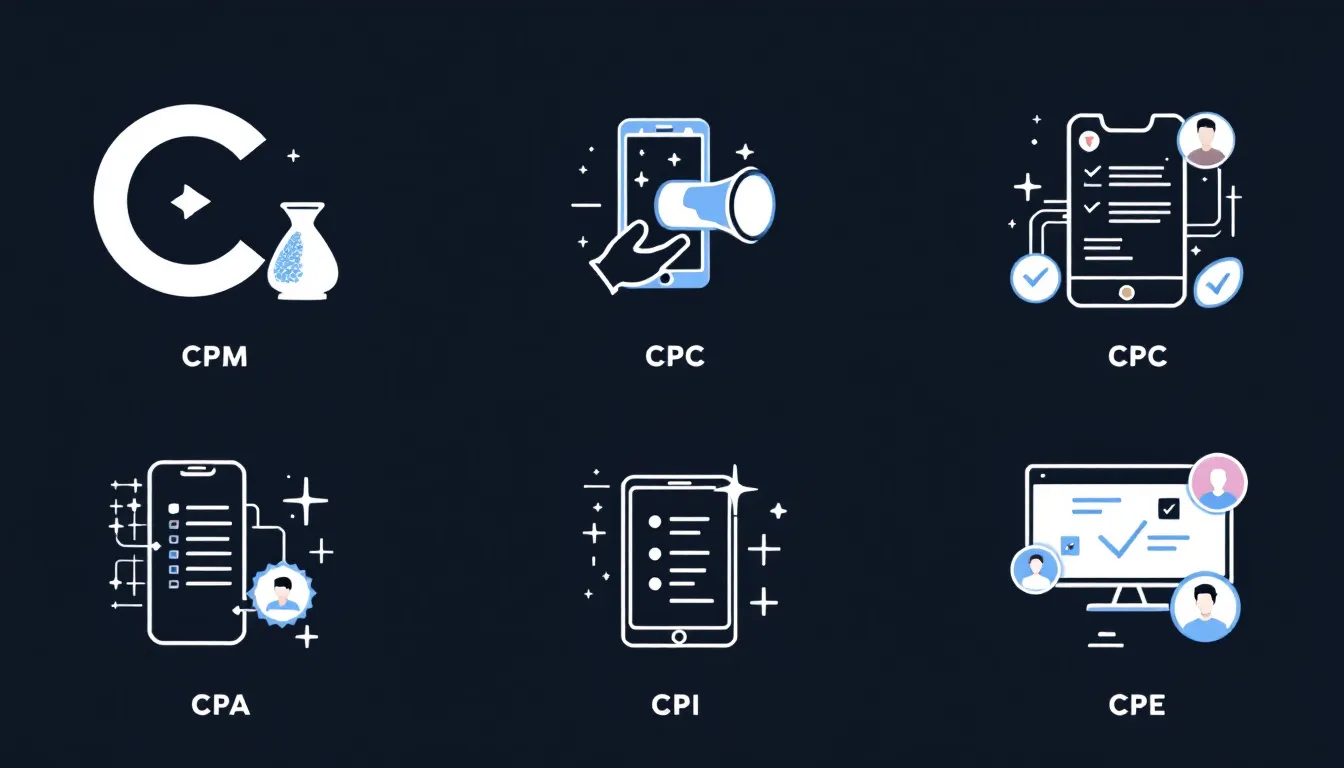Finding and creating quality content takes a lot of time and effort.
Luckily, there are tools that can help streamline content curation and creation, saving digital marketers significant time while producing high-quality assets.
In this post, we'll review the top tools that assist in efficiently curating and creating content for digital marketing strategies, helping to build a solid content foundation.
Introduction to Content Curation and Creation in Marketing
Content marketing has become an essential strategy for businesses looking to build their online presence and connect with customers. At its core, a content marketing strategy relies on the creation and distribution of valuable, relevant content to attract and engage a target audience.
There are two primary ways to develop content for content marketing campaigns - through content creation or content curation. Understanding the difference between these two approaches, and how to leverage both, is key for creating an effective content strategy.
Understanding the Content Marketing Landscape
Content marketing refers to the creation and sharing of online materials like blog posts, videos, and social media updates that provide value for a target audience. The goal is to establish a business as a trusted expert in their industry and foster lasting connections with customers.
High-quality content is vital for search engine optimization, lead generation, and driving website traffic. That's why 89% of B2B marketers use content marketing, dedicating over a quarter of their marketing budgets to content creation and curation.
The Difference Between Content Creation and Curation
Content creation involves developing original text, images, videos, and other media specifically for your business. This allows full control over messaging and brand voice. However, content creation from scratch can be resource-intensive.
Content curation means finding and sharing the best existing online content that would interest your target audience. This content is produced by others but curated and distributed to support a brand's goals. Content curation enables leveraging others' high-quality materials to establish subject matter expertise.
The Synergy of Curation and Creation for Digital Marketers
An effective content marketing strategy combines both curated and created content. Creation brings customized, on-brand assets while curation provides credible third-party materials to back claims and demonstrate awareness of industry issues.
Together, they enable frequently updating social channels, websites, and blogs with a steady stream of engaging, educational content optimized for organic reach and conversions.
Is it better to curate or create content?
Both content curation and creation have their place in an effective content marketing strategy. Here is a comparison of the two approaches:
Content Curation
- Involves finding and sharing relevant content created by others
- Can build trust and authority by linking to quality external content
- Curated content receives 33% more engagement on social media
- Easier to implement as it leverages existing content
- Still requires effort to find and compile high-quality content
Content Creation
- Produces original content assets like blog posts, videos, podcasts
- Owned media allows full control over messaging
- Created content has a 54% higher click-to-conversion rate
- More time and effort required for content production
- Enables personalized touchpoints with audience
Ultimately, a balance of both curated and created content is recommended. Curated content brings in your audience and gets them engaged. Created content then activates that audience and drives conversions.
Integrating both approaches can increase content reach and effectiveness. For example, curating industry news and trends, while also publishing educational blog posts based on your expertise. Or sharing relevant videos, as well as creating your own video content.
The ideal mix depends on your goals, audience, and resources. But using curation and creation together enables you to expand your content library while also better connecting with your audience.
What is the difference between a content creator and a curator?
Content creation refers to developing original content from scratch to share a brand's unique perspective, insights, products, or services. This involves ideating, researching, writing, designing, and publishing owned media assets tailored to your brand across digital channels.
In contrast, content curation describes the process of discovering, organizing, and sharing relevant third-party content that aligns with your brand. Rather than creating content, curators filter through existing online information to find and repurpose quality assets to engage their audience.
Here are some key differences between content creators and curators:
-
Content Creation
- Develops 100% original content
- Requires more time and resources
- Focuses on owned media
- Builds brand authority
-
Content Curation
- Repurposes existing online content
- More efficient use of time and resources
- Utilizes earned and paid media
- Establishes thought leadership
In summary, creators and curators fulfill complementary needs in a solid content marketing strategy. While creators build branded assets and an authoritative voice, curators amplify reach and demonstrate awareness of industry conversations. An integrated approach leveraging both original and curated content is ideal for digital marketers looking to maximize their audience, engagement, and conversions.
What is an example of content curation?
Content curation refers to the process of gathering, organizing, and presenting relevant content on a specific topic from various online sources. An example of effective content curation would be creating a social media post or blog article that provides a roundup of recent news and developments in a particular industry.
The curated content could include a mix of materials like:
- News articles from industry publications
- Infographics and statistics from research reports
- Tips or advice from industry blogs and thought leaders
- Relevant images, gifs, or videos
The goal is to add value for the reader by summarizing key information and trends on a topic in one place. Curated content helps filter through the noise and focuses on presenting content that is current, useful, and engaging to followers.
An example social media post using curated content could highlight the top digital marketing trends predicted for 2023. It would link to 3-4 recent articles on the topic from marketing thought leaders and publications, summarizing the key trends like AI-powered content creation, video marketing, etc. An eye-catching related graphic could also be included to help visualize the content.
The post saves the reader time by compiling the latest information and data on future marketing trends from credible industry sources. Presenting the content in a visual, easy-to-skim manner tailored for social media delivers value and helps build a following.
sbb-itb-645e3f7
What does a content curator do?
A content curator is responsible for finding, evaluating, and presenting relevant online information and resources to a target audience. Their role involves:
- Researching topics and trends using tools like Google Alerts and Talkwalker to identify shareworthy content.
- Assessing content quality and relevance to buyer personas and audience interests.
- Selecting and organizing the best, most valuable content on a topic into collections like social media posts or newsletters.
- Optimizing presentation and distribution for maximum engagement and sharing.
Content curators add value by filtering through the overwhelming amount of online information to select only the most useful, practical resources for their readers. This saves audiences time while keeping them up-to-date on topics they care about.
For digital marketers and social media managers, content curation streamlines finding shareworthy articles, images, and videos to populate social channels and blogs. Automation tools like Hootsuite Syndicator and Curate by UpContent can facilitate scheduling curated updates based on audience interests and engagement data.
Overall, content curators produce more content faster by repurposing and presenting existing materials rather than creating original assets from scratch every time. This allows them to develop a reliable system for regularly feeding their audience quality information.
Essential Tools for Content Curation
Content curation involves collecting, organizing and presenting relevant content on a specific topic. For digital marketers and content creators, effective curation streamlines finding shareable content to promote brands and engage audiences. This section covers top tools and best practices to simplify content curation.
Leveraging Google News Alerts and Talkwalker for Trend Tracking
Google News Alerts and Talkwalker provide simple ways to track industry trends and breaking news for curation:
- Google News Alerts - Create customized alerts by keyword that deliver matching articles daily or weekly. Review alerts to identify timely, shareable content.
- Talkwalker - This social media monitoring tool lets you track brand mentions, hashtags, keywords and more across the web and social media. Use it to stay updated on trending topics.
Setting up alerts around target content curation and creation terms, competitors and industry news enables finding content to share as stories develop.
Curate by UpContent and Flipboard: Curation at Your Fingertips
Tools like Curate by UpContent and Flipboard make curating content quick and easy:
- Curate by UpContent - This built-for-curation tool provides a content library organized by topic. Easily discover and share articles, videos and more.
- Flipboard - Flip through this app's curated news feeds by topic. Save shareable content to custom magazines.
Both platforms offer browser extensions to simplify saving shareable content directly while browsing. Their structured libraries enable organizing curated content to easily find and post top stories.
Social Media Management with User-Generated Content
Incorporating user-generated content (UGC) into social media marketing is an excellent curation tactic. UGC includes:
- Social media posts
- Ratings and reviews
- Visual content
- Comments and questions
UGC feels authentic as it comes directly from customers and fans. Repost great UGC shared with your brand across social channels. Ensure proper attribution by tagging the author.
Scheduling Curated Content for Maximum Impact
The best times to post curated content vary by social platform and audience. Use social media analytics and these best practices to determine optimal timing:
- Facebook - Post mid-week between 1-4 PM when engagement peaks
- Twitter - Tweet late afternoon between 3-6 PM on weekdays
- LinkedIn - Post in the morning before 11 AM or early evening on weekdays
- Instagram - Schedule highly visual content on weekends
Schedule posts in advance using Hootsuite, Sprout Social or other social media management platforms. Analyze performance to refine timing. Follow users and promote content at times when your audience is most active.
Leveraging the right mix of curation tools enables efficiently finding and sharing the best timely content across social channels. Focus curation efforts around target keywords, brands and topics aligned to audience interests.
Innovative Tools for Content Creation
This section outlines top tools and strategies for boosting productivity in creating engaging, original content for digital marketers.
Contentworks Agency: A Digital Asset Library for Creators
Contentworks Agency provides a cloud-based digital asset library that makes it easy to store, organize, and share marketing content. This content management system helps streamline asset creation and reuse by centralizing all visuals, documents, videos, and other files in one searchable hub.
Marketers can set up team permissions to collaborate on assets, as well as track asset performance with built-in analytics. By consolidating digital assets and workflows, Contentworks Agency saves time and effort while enabling more impactful content campaigns.
Crafting Blog Posts and Social Media Content
Creating quality blog and social media content requires planning and strategy. Useful tools for ideating and developing content include:
- Buyer Personas - Outline target audience attributes, goals, and pain points when brainstorming content ideas.
- Editorial Calendars - Map out content themes and topics in advance to maintain a consistent publishing schedule.
- Google Alerts - Get updated on trending news and discussions to spark timely content ideas.
- Headline Analyzers - Test headline wording variations to optimize click-through rates.
- Content Gems - Discover viral content opportunities by analyzing top-performing articles.
Enhancing Visuals for Social Media Strategy
Compelling social media visuals align with a defined brand style and strategy. Useful techniques include:
- Curate images reflecting brand personality and values.
- Optimize images for visibility on different platforms.
- Create visual templates for consistent social media posts.
- Analyze top-performing visuals to inform future content.
- Use tools like Canva to quickly design polished graphics.
Leveraging Social Media Publishing Solutions
Social media publishing platforms help distribute content to multiple channels efficiently. Top solutions include:
- Hootsuite - Schedule and publish content across social platforms.
- Sprout Social - Analyze social media performance and engagement.
- Sendible - Collaborate with a team to manage social accounts.
- SocialPilot - Queue and automate posting of social content.
With robust social media publishing tools, marketers can save time, expand reach, and measure content impact across social channels.
Combining Content Curation and Creation for Effective Marketing
Content curation and creation are complementary strategies that together enable effective digital marketing when aligned under a unified content strategy.
Hootsuite Syndicator: A Tool for Unified Content Strategies
The Hootsuite Syndicator integrates both curated and created content streams into a single publishing workflow. Marketers can:
- Curate relevant social content from RSS feeds, hashtags, etc.
- Create original text, image, and video content
- Schedule content to automatically publish to social channels
This unified approach to curation and creation ensures content remains cohesive, supports brand messaging, and eliminates redundancies or gaps.
Identifying and Filling Content Gaps
Perform an audit comparing created content against audience interests and engagement analytics. This reveals gaps where additional curated or created content is needed. Strategically fill gaps by:
- Curating industry news, trends, etc. from alerts and APIs
- Creating how-to guides, FAQs, interviews etc. around trending topics
Filling gaps ensures a steady stream of content aligned to audience needs.
Strategizing for Social Commerce and Social Selling
Curated product imagery and user reviews support social selling by highlighting product value. Created tutorials and promotional content drives conversions. An integrated strategy includes:
- Curating and sharing customer images and testimonials
- Creating product demo videos and coupon codes
This drives awareness, builds trust, and motivates purchases through social channels.
Employee Advocacy: Amplifying Curated and Created Content
An employee advocacy program equips staff to share curated and created content. This lending authenticity and further reach. Tactics include:
- Curating industry articles for employees to share
- Creating branded content for employees to voluntarily amplify
The combined credibility of branded content and genuine employee voices drives powerful marketing results.
Conclusion: Integrating Curation and Creation for Content Marketing Success
Recap: The Significance of Content Curation in Digital Marketing
Content curation plays a pivotal role in modern digital marketing strategies. By carefully selecting and sharing relevant third-party content, marketers can establish their brand as an authoritative industry voice. Curating content allows brands to:
- Showcase expertise by identifying high-quality content
- Increase reach and engagement by sharing widely consumed media
- Build trust by associating with credible sources
- Save time compared to creating original content
When done effectively, curation enables brands to tap into existing conversations and position themselves as go-to hubs for industry-related content.
Recap: The Creative Power of Content Creation
While curation delivers many benefits, original content creation remains essential for brands aiming to stand out online. By publishing custom articles, videos, podcasts, and more, companies can:
- Control messaging and brand voice
- Offer unique value to capture audience mindshare
- Build a library of owned media assets
- Target content to strategic goals
Creation and curation should work hand-in-hand to help brands cut through the noise. Thought leadership content establishes niche authority while curated content expands reach.
Key Takeaways for Digital Marketers
When leveraged together, content curation and creation provide a powerful 1-2 punch:
- Curation for reach, creation for differentiation: Curate to engage wider audiences, create to showcase unique perspectives
- Balance breadth with depth: Share curated content broadly, double down on owned assets to dominate specific conversations
- Monitor performance: Analyze metrics to determine optimal curation sources and high-performing created content
- Refine over time: Continually test and optimize to determine the best content mix for target audiences
By interweaving curated and created content, digital marketers can maximize exposure while establishing their brand's distinctive voice. The synergy between these two approaches helps cut through the digital noise to deliver relevant, valuable experiences for customers.


